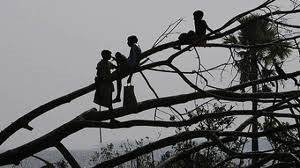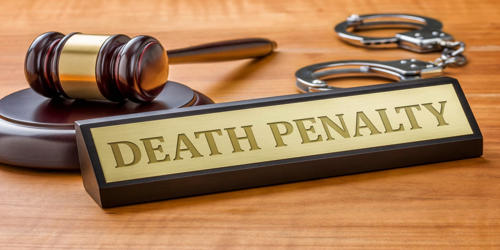The Background Information
Bangladesh is a land of rivers. Padma, Meghna, Jamuna, Brahmaputra and hundreds of other rivers and their tributaries have crisscrossed the country and have formed its civilization, people’s livelihood, culture, identity. The people of Bangladesh are traditionally peace-loving and moderate people, deeply rooted from their surrounded nature in their identity, their professions and livelihoods. Nature has blessed the country with its fertile landscape, beautiful hillocks, the wonder of the earth the Sundarbans, the longest unbroken sea-beach in the world Cox’s Bazaar, among others. The country has an approximate area of 147,570 sq. km. bounded between 20°34’ to 26°38’N latitude and 88°01’ to 92°41’E longitude and has 4,685 km. long unique geographical location (MoFDM, Govt. of Bangladesh, 2008). It has around 133,910 sq.km. of land and 10,090 sq. km. of water bodies of which 73% are arable fertile land. The physiography of Bangladesh is primarily of two types: a vast plain lands prone to frequent floods and smaller hillocks particularly in the Chittagong Hill Tract and Sylhet areas. It is surrounded by India from three sides with a long 2400 km. border and has a 193 km. border with Myanmar. The country is one of the most over-populated countries in the world with its 150 million (approximately) population and a density of population 950/ sq.km. and an annual growth rate of 1.8%. Bangladesh has a tropical monsoon-type climate. Three seasons are generally recognized: a hot, muggy summer from March to June; a hot, humid and rainy monsoon season from June to November; and a warm-hot, dry winter from December to February. In general, maximum summer temperatures range between 38 and 41 °C. April is the hottest month in most parts of the country. January is the coolest (but still hot) month, when the average temperature for most of the country is 16-20 °C during the day and around 10°C at night (Wikipedia, 2008). Heavy rainfalls are common during the summer/ rainy seasons which also causes frequent floods in the low-land districts. Bangladesh is primarily an agricultural country, although the service sector is currently contributing more than 50% of the country’s GDP growth. According to the World Bank, Bangladesh’s GDP was US$ 62.00 billion with a 6.7% annual growth rate in the year 2006. More than 52 % of the GDP is contributed by the service sector, mostly from the garments and ready-made clothes, along with 28% GDP by the industry and a moderate 20% by the agriculture. It has a negative trade balance and the country is heavily dependent on the imports of petroleum products, heavy- industrial goods, machineries, etc. India is the largest formal and informal trading partner. Currently the country is facing a high inflation rate and the local currency rate is continuously falling against US$. Bangladesh has done considerably better among the developing countries in the front of primary education, enrolment of girls, immunization of the children, infant mortality, birth control, control of many severe dieses like polio, cholera, etc. The country is one of least affected countries in terms of incidence of HIV/AIDS.
At present Bangladesh is known to the world for two special reasons: one of them is poverty and excessive population and the other is natural disaster. It will not be mistake if Bangladesh is described as land of natural disaster. From the geographical point of view Bangladesh is situated in the tropics: it is a riverine country: a vast ocean lies to the south and the Himalayas, the world’s largest chain of mountains, lies to the north. Because of its position between a vast on one side and the highest mountain range on the other, Bangladesh falls a victim to natural disaster, particularly those of flood and cyclone. Since it will never be possible to change geographical position of Bangladesh, we have no alternative to living with such natural disasters as flood and cyclone, and work for development in the midst of these.
The country is highly vulnerable to floods, tropical storms/cyclones with tidal surges, coastal and river bank erosion, water logging, tsunami, earthquake, soil salinity, landslide, contamination of water by arsenic, etc and these disasters take a heavy tool every year in terms of human lives, animals and poultry, agricultural produces, properties and houses, etc. It is one of the most affected countries of the world in terms of various disasters. The agriculture of country is also badly affected by the natural disasters. The following table will help us to understand the disasters in the last decade in Bangladesh and their severity:
Disaster | Date | Killed (Human Toll) |
| Wind Storm | 15/11/2007 | 4234 |
| Flood | 21/07/2007 | 1110 |
| Flood | 20/06/2004 | 730 |
| Extreme Temperature | 15/12/2002 | 700 |
| Wind Storm | 1/4/2001 | 193 |
| Flood | 11/6/2003 | 187 |
| Extreme Temperature | 15/12/2003 | 153 |
| Wind Storm | 12/6/2004 | 153 |
| Extreme Temperature | Jan-07 | 130 |
| Flood | 11/6/2007 | 120 |
Table-1: Disasters in the Last Decade in Bangladesh
Source: http://www.emdat.be
Of these disasters the two which are the most damaging and cause the greatest hardship and distress are flood and cyclone. Here I try to submit a paper on cyclone.
Cyclone
For hundreds of years violent cyclones have been destroying lives and property in the costal regions of Bangladesh. The havoc and the extent of destruction are increasing day by day. It is very difficult to exactly state how many people have so far lost their lives in see-borne cyclones. It can unequivocally recognize that a see-borne cyclone is the source of very great danger for a great enemy of the costal people and a great impediment to their development.
And analysis of the history of cyclone in Bangladesh will show that cyclones form mostly at the beginning and end of summer. In other words most violent cyclones occur during Baishak-Jaistha (April-May) and Ashwin-Kartick (October-November) of the Bengali year. Cyclones occur at other times of the year also but their number and severity are comparatively smaller and lesser respectively then at those times mentioned above.
It must be clearly remember that see-borne cyclones are caused by excessive heat. It is the countries or regions which are situated in the tropics that are subject to high winds or cyclones.
The possibility of the occurrence of cyclones increases when the scorching rays of the sun cause the temperature of the surface of the see to rise above 27degree Celsius. Cyclones do not generally form on the surface of those seas where the temperature is less than 27degree Celsius.
When the temperature of the water and air increase on some part of the surface of the sea because of the scorching rays of the sun, the air becomes lighter and rises: a vacuum is created in its place where this happens cold and heavy low pressure air from all around, along with clouds, rushes at a very high speed to fill the vacuum and enters the vacuum whirling round and round. The wind that blows at a very high speed towards the vacuum is known as a cyclone.
Introduction
Cyclone Sidr was the strongest named cyclone in the Bay of Bengal. The fourth named storms of the 2007 North Indian Ocean cyclone season, Sidr formed in the central Bay of Bengal, and quickly strengthen to reach peak 1-minute sustained winds of 260 km/ph (160mp/h), which would make it a category-5 equivalent tropical cyclone on the Saffir-simpson scale. The storm eventually made landfall in Bangladesh on November-15, 2007. The storm caused large-scale evacuations here. 3447 deaths were blamed on the storm.
Save the children estimated the number of deaths to be between 5000 and 10000, while the Red Crescent society reported on November 18 that the number of deaths could be up to 10000.
| Sl.no | Item | Quantity(no./km) |
| 1 | Affected District | 30 |
| 2 | Most Affected District | 12 |
| 3 | Affected Upazila | 200 |
| 4 | Affected Union | 1,950 |
| 5 | Affected Households | 2,064,026 |
| 6 | Affected People | 8,923,259 |
| 7 | Crops Damaged (ha) | |
| a. Fully Damaged (ha) | 300,940 | |
| b. Partially Damaged(ha) | 700,533 | |
| 8 | Damaged Houses | |
| a Fully damaged house | 564,967 | |
| b. Partially Damaged House | 957,110 | |
| 9 | Death Toll | 3,406 |
| 10 | Injured persons | 55,282 |
| 11 | Missing person | 1,001 |
| 12 | Dead livestock & poultry | 1,873,694 |
| 13 | Damaged Educational Institution | |
| a. Fully damaged (No) | 4,231 | |
| b. Partially damaged (No) | 12,723 | |
| 14 | Damaged roads (km) | |
| a. Fully damaged(km) | 1,714 | |
| b. Partially damaged (km) | 6,361 | |
| 15 | Damage bridge/culverts (No) | 1,850 |
| 16 | Damaged embankment (km) | 1,875 |
| 17 | Damaged Trees (No) | 4,065,316 |
Table-2 Summarized information on damage and loss due to cyclone Sidr
Objectives of the study
People of the Latachapli union had heard the news to go to cyclone shelter but did not take it seriously. For this reason, people did not get much time to move from their habitat. The sea water entered into the area and got back within a minute. Within this minute, almost everything was swept away. The effect of this catastrophe was enormous. It destroyed lives, crops, livestock, houses and schools in such a way that the economy of this particular region broke down and it would take several years to recover the total loss. Fishing and Agriculture are two major professions in Latachapli union to mobilize the local economy. After Sidr, paddy fields, oxen, agricultural tools, boats and fishing nets were damaged quite badly that the local people has to leave their farm uncultivated for this season.
As I noticed so far, many researches have been done on different Sidr-affected areas but I have not found any work of the condition of children after Sidr on Latachapli Union. In this paper, I have tried to focus the condition of children after Sidr.
Methodology
The data for this study have collected from both Primary and Secondary sources. I use qualitative research method for collecting primary information. For primary sources in death information was collected through a number of case studies, respondent information, and direct observation. Sidr affected Latachapli union of Kalapara Upozilla under Patuakhali district was selected as primary source.
Media coverage on sidr, research, reports, articles, and website information were the source of secondary information.
Literature review
Different media including television, newspaper, journal, research report had reported different kind of information on sidr. Some latest updates from different news sources so far:
Hurricane SIDR struck Khulna-Barishal coast shortly after 5.00pm Thursday, setting of driving rains in its path.
Hurricane triggered heavy winds speedy at up to 180kmph through Hiron point, Khepupara, Dublarchar and coastal areas adjacent to the Sundarbans.
The sea turned “very turbulent,” the weather office said. Water level rose by up to feet in the Bay.
The eye of the storm was still about 350 km (220 miles) from the coast and was expected to make landfall around midnight Thursday (1800 GMT).the eye of the storm has been static, but may suddenly move with super speed before it finally slams the shores.
Here I noticed that there is no information on children. All media coverage tried to focus the socio-economic condition of Sidr affected area. This lacking encourages me to work on children in Latachapli union.
The Condition of children after SIDR
Survival:
In the aftermath of a natural disaster, children continue to face dangers to their survival. Because of unsanitary conditions and lack of clean water or disinfectant, even minor injuries sustained in a disaster can become life-threatening without medical attention. As well, fallen buildings, destroyed homes, flooded paths or waterholes continue to pose safety hazards to children who are left unsupervised.
Children need appropriate food, adequate water and sanitation, and shelter as soon as possible. Without these basics, children’s immunity against disease will be vastly reduced.
Separation from parents:
When children were separated from their parents by a sidr, it might take days or even weeks to reunite them. In the meantime there was no way of knowing whether parents have survived. As people moved away from affected areas, there was also further risk to the breakup of families. The distress caused by this is considerable for children, made even worse if they cannot find extended family to care for them in the meantime.
A priority for agencies should be to identify separated children in disaster-affected communities, ensure they are being cared for, and let them know, as well as family members, friends and neighbors, what is being done to help.
Distress and grief:
Children had lost friends, siblings, parents and relatives. At a minimum, they need psychosocial support (see overleaf), with routine and a sense of safety and normalcy restored as soon as possible, and an understanding that their basic needs of food, shelter, water and care can still be met.
Health and hygiene:
Children are especially vulnerable to deteriorating health, not least because they often do not understand the hygiene risks. Pregnant or nursing mothers particularly need rapid care and safe places to take care of their babies. Education on avoiding infections and water-borne diseases should be delivered to children as well as adults in terms that they understand. Appropriate hygiene supplies need to be delivered rapidly to prevent further death and illness. There are particular risks at this time due to the coming monsoon rains and the lack of basic shelter and protection against mosquitoes and other animals/insects.
Instability:
After a sidr, affected communities do not know what will happen next. This instability affects both adults and children and can result in depression, panic or despair.
Agencies working in disaster zones need to give parents and children as much information as they can about their entitlement to support, what they will get and when they will get it – for example food, water, and shelter. This will help support their psychosocial well being. Spaces where children can feel safe are a priority for World Vision post-disaster.These spaces enables children to establish a routine, while their parents get on with the practical realities of dealing with displacement. They allow key hygiene and safety messages to be given out. Child-friendly spaces are also important in keeping children away from dangerous places and protecting them from exploitation or abuse. Trained staff can identify and respond to children in need of counseling or medical care.
Countless children were left orphaned, injured, and vulnerable to disease after the devastation caused by Cyclone Sidr.
Findings of the study
There is no available information on children. Some information is found from Latachapli union about overall impact of Sidr. This information is added at the end of the paper.
Case study
Mamuni
Mamuni 8 years old girl who was victim of sidr. Though Mamuni’s parent knew about the warning to go safe place for coming sidr, they didn’t show any response about this. Even they didn’t take their children safe place before sidr. When the rise of sea water entered into their house, they tried to swim and wanted to take shelter in the embankment. Mamuni was sleeping when it was happened. She got up from the bed and frightened. She also tries to swim with his parents. On the way of swimming she broke down her leg fallen into marshy land. Her father tied her by his towel (gamcha) and tried to swim. When they got into the dam they didn’t give her proper treatment because there was no doctor. Three days later she could bandage her leg by a doctor who came from Dhaka. But lack of medicine and regular basis monitoring she can not get round today. She didn’t get enough relief and proper support. When she was talking with me, she came with her mother for relief but she got nothing. I asked her to go to school but she didn’t show any interest about it. She told me that education couldn’t change her condition which relief could. Relief is the main requirement for her now a day.
Sathi
Sathi, who is 10 years old, lives in West Alipur in Latachaoli union. She collects renu pona in the early morning. When her family was affected by Sidr, they lost everything. Even they had no cloth to wear. She and her family were survived by collecting food from the surrounding reach family. After a week they returned their home. Now her father is a rickshaw puller and her mother is a home servant. She had the ability to go school 1 month later after Sidr. She got new books and her school begun to give biscuits since seven days when I was talked with her. She came to Union Parishad for relief. She got a dress but she didn’t satisfy with this. She thought that chairman could do many things for children but he didn’t show any interest for them.
Karima
Karima, whose age is 7 month, when she was 15 days, the Sidr was occurred. She was under water one and half an hours during Sidr. She was injured in her bally. Her mother informed me that when she was found her daughter under water one and half an hours later baby’s father thought that the baby was dead. They were prepared to bury her. Fortunately the child got her life but she didn’t get round. Now she is suffering from lack of nutrition. She didn’t get any treatment after injury. She doesn’t eat properly for her injured belly.
Picture: Karima and her mother
Recommendation
Immediate life saving relief food assistance should be provided for 4500 people in the latachapli union. Dry food such as high energy biscuits, flattened rice and molasses are appropriate for the near term (1-2weeks) considering the loss of cooking facilities and cooking utensils for many of the worst affected households. Food items such as rice should also be immediately distributed as soon as possible. A more complete food aid basket including pulses and oil are appropriate for the mid to end period of the 2-3 month relief distribution period.
Shelter assistance is urgently needed. materials for housing reconstruction and repairs such as corrugate iron sheets , wood, poles, nails , hammers , saws, etc… are high priority items for shelter assistance. It will be important to incorporate sound disaster risk reduction elements into the re building efforts. Many of the worst damaged houses were located in very close proximately to shorelines and in open wind exposed areas, thus rebuilding in these areas will only contribute to continued future vulnerability.
Sanitation assistance is needed for the worst affected areas. Physical damage to household latrines was fairly common .In many cases were roofs or entire walls were lost there is now a complete absence of privacy. The rebuilding of houses and associated latrines further away from shorelines and surface water bodies such as ponds will benefit future disaster risk reduction particularly in terms of preventing water contamination and water diseases.
Immediate drinking water supplies are for and estimated 4500 people. In some of the worst affected areas, water wells were contaminated with saline water. Where piped water exists, the lack of electricity or its crratic supply present major challenges in terms of access to safe drinking water.
Medical facilities are in need of quick repair and the restoration of electricity, in support of medical services is particularly important. Approximately 4500 people in the worst affected districts are in need of urgent medicine, medical supplies, or supporting medical services.
Sufficient human and material resources must be dedicated to the coordination of relief operations. A well coordinated, efficient, effective, and timely response will continue to be a major challenge. Coordination between national institutions such as Ministries, the military, customs, etc. are critical. Effective national to international coordination also presets a challenge. The number of international institutions either providing finding, operational support, or directly implementing relief assistance is rapidly growing, as aid from around the world flows into Bangladesh. Co ordinations on logistics and information management represent to of the highest priority coordination areas.
The reconstruction or repair of roads, embankments, and culverts is a high priority. It is not too early to be thinking about the planning and implementation of early recovery, or longer term recovery and rehabilitation efforts for specific critical community assets and infrastructure. Since these efforts require considerably longer implementation periods, they should be planned an implemented on a time line that allows early completion well in advance of the 2008 monsoon season. The implementation of early public work schemes and safety nets either using cash for work or food for work is critical. The beneficial effects of generating employment and much needed income for worst affected poor people can not be underestimated.
Risk analysis and risk mitigation should be a mandatory element of any new construction or replacement program design. This should involve both single sector and cross sector risk analysis.
Contingency planning and capacity building is required at the field level to strengthen early warning, evacuation, rescue, relief management damage assessment capability and interagency coordination.
Community disaster learning centers should be established and risk reductions measures should be undertaken in severely affected and high vulnerable districts.
Follow on more in-depth assessments are required, for a more accurate understanding of needs and programming option.
Conclusion
The paper is an attempt to highlight the problem faced by some children in Latachapli union due to Sidr. One of the aims of the paper was to emphasize the fact that children were suffered from several problems. We know that children are our future bright nation. We should not do anything without them. So we should take necessary steps to solve this problem. The govt, non-govt organizations, media and local community should also work hand in hand. Community based mitigation worked should also be carried out. In order to improve the condition of children psychological support, food, medical facilities, education, etc. should be provided as soon as possible. I think my paper will help the high officials to consider the problem.
Reference
Islam Nazrul Project of Sidr cyclone in Bangladesh
Prothom Alo 15 November 2007-30 June 2008
Daily Star 15 November 2007-30 June 2008
















